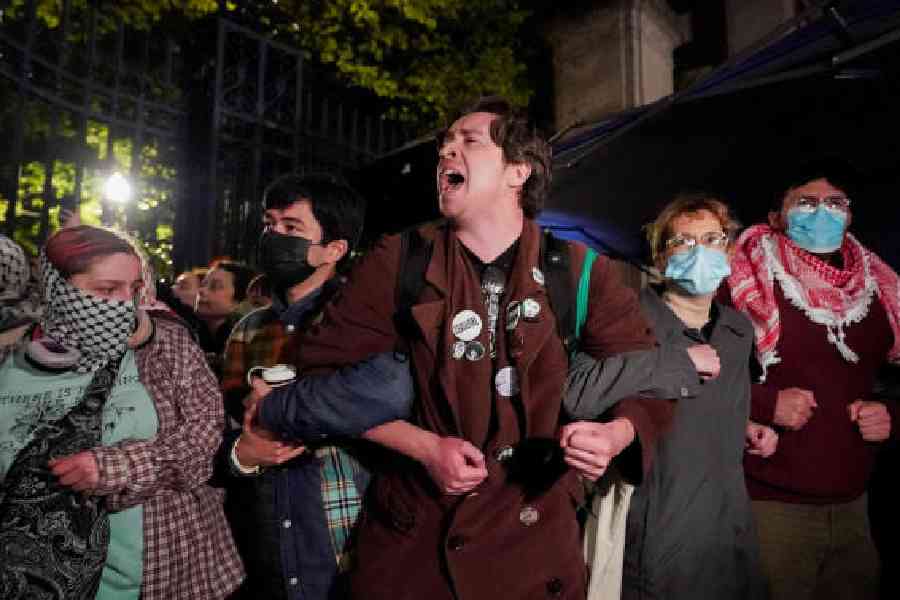From Columbia, with love


Anyone who was at Columbia University in the US in the spring of 1968 cannot help but see a reprise of those stormy, fateful and thrilling days in what is happening on the Morningside Heights campus of Columbia today.
But there is a troubling and significant difference. If the students back in ’68 were divided into rebellious, longhaired pukes and conservative, close-cropped jocks, with a lot of undecided in between, the current protests at Columbia — and at the growing number of other campuses to which they have spread — have witnessed personal and often ugly divisions between Jewish students and Arab or Muslim students or anyone perceived to be on the “wrong” side of the Israeli-Palestinian conflict.
That, in turn, has thrust the protests squarely into the polarised politics of the land, with politicians and pundits on the Right portraying the encampments as dangerous manifestations of antisemitism and wokeness, and demanding that they be razed — and many university administrations calling in the police to do just that.
The transformation of the protests into a national political football is perhaps inevitable — everyone up to President Richard Nixon sounded off about students in ’68 — but it is still a shame. Because student protests, even at their most disruptive, are at their core an extension of education by other means, to paraphrase Prussion military theorist Carl von Clausewitz’s famous definition of war.
From Vietnam to apartheid to the murder of George Floyd, universities have long been places for open and sometimes fiery debate and inquiry. And whenever universities have been perceived by students to be complicit or wrong in their stances, they have been challenged by their communities of students and teachers. If the university cannot tolerate the heat, it cannot serve its primary mission.
The counterargument, of course, is that without decorum and calm, the educational process is disrupted, and so it is proper and necessary for administrations to impose order. But disruption is not the only by-product; protests can also shape and enhance education: a disproportionate number of those who rose up at Columbia in 1968 went into social service of some sort, fired by the idealism and faith in change that underpinned their protests and by the broader social movement of the ’60s.
I was a first-year graduate student at Columbia in ’68, living in the suburbs and so more of a witness than a participant in events of that spring. But it was impossible not to be swept up in the passions on the campus.
The catalyst was a protest by Black students over the construction of a gym in Morningside Park, which touched on many Black grievances against the university — the way it was pushing into Black neighbourhoods, the gym’s limited access and a separate door for area residents, many of them Black.
The Black sit-in quickly galvanised students from all the other social and political causes of that turbulent era — a war that was killing scores of American boys and countless Vietnamese every week, racism that just weeks earlier took the life of the Rev. Martin Luther King Jr. and, yes, a celebration of flower power and love. The gym issue was quietly resolved, but by then, other students were occupying several buildings. Finally, Columbia’s president, Grayson Kirk, called in the police.
The sit-ins had been ended, and order was being restored, but something frightening and beautiful had been unleashed, a faith that mere students could do something about what’s wrong with the world or at least were right to try.
J ust as students then could no longer tolerate the horrific images of a distant war delivered, for the first time, in almost real time by television, so many of today’s students have found the images from the Gaza Strip, now transmitted instantly onto their phones, to demand action. And just as students in ’68 insisted that their school sever ties to a government institute doing research for the war, so today’s students demand that Columbia divest from companies profiting from Israel’s invasion of Gaza. And students then and now have found their college administrators deaf to their entreaties.
Certainly there’s a lot to debate here. Universities do have a serious obligation to protect Jewish students from antisemitism and to maintain order, but it is to their students and teachers that they must answer, not to Republicans eager to score points against woke “indoctrination” at elite colleges or to megadonors seeking to push their agendas onto institutions of higher learning.
I’m not sure exactly how that spring of 1968 affected my life. I suspect it forced me to think in ways that have informed my reporting on the world. What I do know is that I’m heartened to see that college kids will still get angry over injustice and suffering and will try to do something about it.
NYTNS